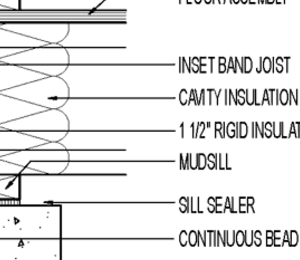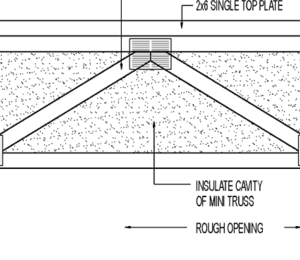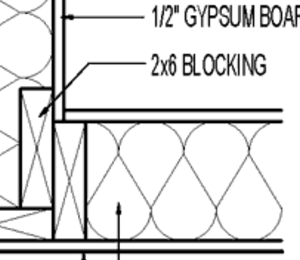The whole point of advanced framing, also known as optimum value engineering (OVE), is to frame a house so that it meets its structural requirements without wasting material. A welcome corollary is that the same house will have more room for insulation inside the walls and will therefore be more energy efficient than a conventionally framed house. Minor downsides, for example, attaching trim in areas with less structural lumber, and wider spacing of siding fasteners, are easily overcome.
Frame walls with 2x6s @ 24-in. o.c.
Fewer studs can save a lot of wood and increase the energy performance of a house by making more room for insulation.
Stack the framing
Aligning framing members between floors transfers loads efficiently. This means that you can omit the double top plate in favor of a single one. It also facilitates a better-quality job when attaching the plywood or OSB sheathing that spans these transitions.
Place doors and windows on the grid
Moving door and window openings so that they line up on the 2-foot grid reduces waste and, again, leaves more room for insulation.
Use less wood in the corners
Exterior corners can do well with fewer studs and more insulation in them. The same goes for where interior partition walls meet exterior walls — less wood, more insulation.
Omit unnecessary headers
Walls that don't carry roof loads — for example, most gable-end walls — don't require structural headers over windows or doors.

This article is only available to GBA Prime Members
Sign up for a free trial and get instant access to this article as well as GBA’s complete library of premium articles and construction details.
Start Free TrialAlready a member? Log in



